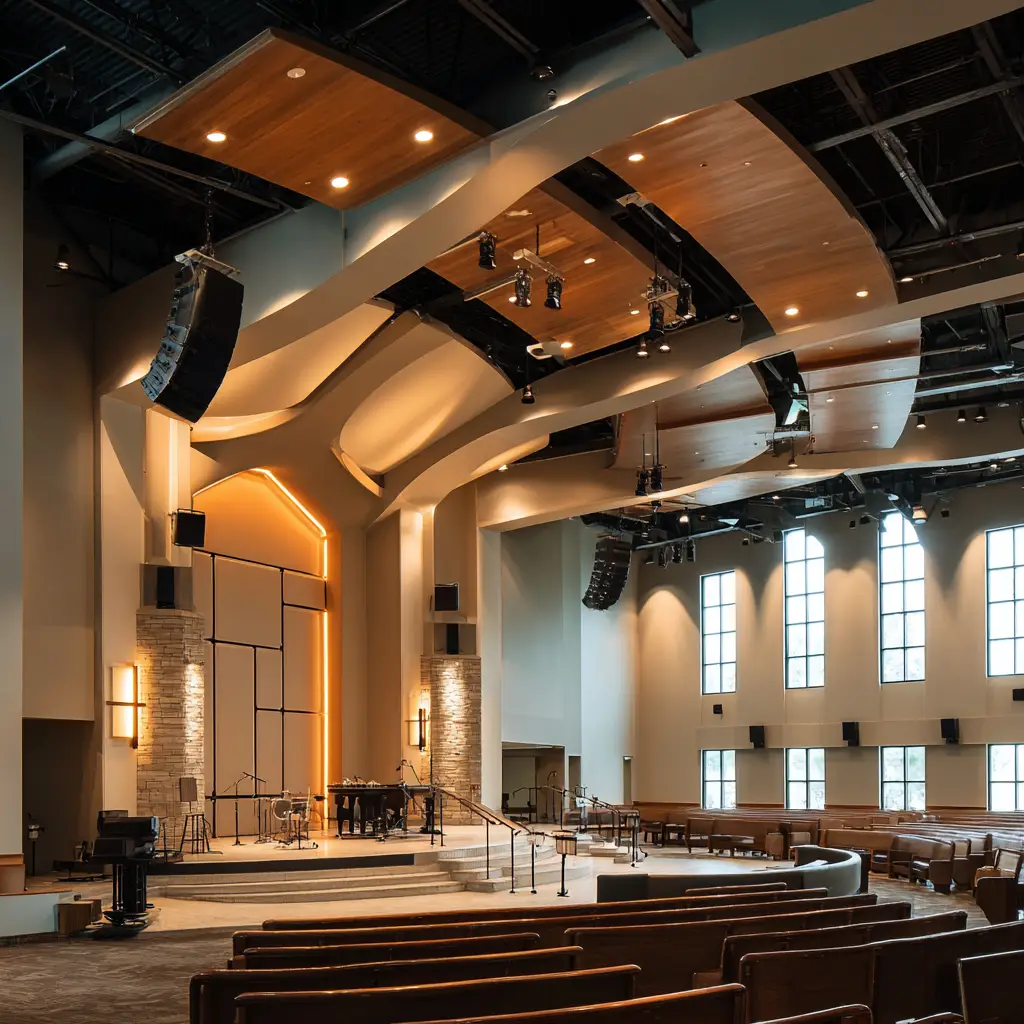
Your microphone worked yesterday. Today it doesn’t. It’s one of the most common problems we encounter in the field—and one that can stop a meeting, service, or class before it even starts. After more than a decade spent solving audio problems in commercial environments—ranging from churches and schools to government buildings, offices, and auditoriums—we’ve seen this pattern again and again. The good news is that most microphone issues stem from a short list of common problems.
In this blog post, we’ll walk you through how to troubleshoot some of the most common microphone problems we see in commercial and institutional settings—so you can get your audio back on track quickly and reliably.
Common hardware issues that stop microphones from working
Before diving into software, settings, or your environment, it’s worth checking the most common hardware culprits. These are the first things AV professionals look for during a service call:
- Check your physical connection – If you’re using a USB microphone or a headset with an audio jack, double-check the connection. A partially plugged-in cable can cause complete mic failure.
- Try a different port or device – Isolate the issue by switching ports or plugging your microphone into a different computer or console. If it works elsewhere, your problem is device-specific.
- Inspect the cable and connectors – Look for bent pins, frayed cords, or loose components. In high-use environments like lecture halls or council chambers, cables often wear out before the mic itself.
- Check wireless pairing and batteries – For wireless systems, low batteries or pairing issues are common. If the mic and receiver aren’t syncing, your signal won’t go anywhere. Recharge or replace the battery, and re-pair the devices if necessary.
Even in sophisticated AV systems, these simple checks resolve many issues before deeper troubleshooting is needed.

Microphone problems caused by software or settings
If your hardware looks fine, it’s time to check your software configuration. Problems at this level are especially common in hybrid meeting spaces where users alternate between Zoom, Microsoft Teams, and other apps.
- Update or reinstall drivers – Missing or outdated drivers can cause your microphone to stop working, especially after an operating system update. Check your manufacturer’s site or use your system’s device manager to verify.
- Verify input and output settings – Go into your system preferences or control panel and make sure the correct microphone is selected as the input device. Some systems default to built-in mics or recently connected devices.
- Review privacy and permission settings – Both Windows and macOS restrict microphone access to protect user privacy. Make sure your preferred apps have permission to access the mic.
- Troubleshoot within the app itself – Each app has its own audio settings. In Zoom, for example, the selected input device may be different from your system default. In Microsoft Teams, your mic may be muted by default. Make sure the correct mic is selected and unmuted inside the app.
We frequently see these issues in government buildings and administrative offices, where meetings rely on various software platforms and shared devices.
Environmental factors that affect microphone performance
If everything is connected correctly and your settings are dialed in, yet your audio still sounds off—or cuts in and out—your space itself may be contributing to the problem.
- Room acoustics – Even high-end microphones can sound hollow or muddy in rooms with poor acoustics. Gyms, multipurpose halls, and cafeterias are notoriously difficult environments because of echo and reverb. A sound system only works as well as the room it’s in.
- Background noise and interference – HVAC systems, projectors, or nearby traffic can introduce noise that masks your voice. For wireless mics, interference from Wi-Fi routers, cell towers, or other AV equipment can disrupt the signal. Professional wireless microphone systems operate within specific frequency ranges to minimize this interference - Shure's guide to wireless frequency coordination explains how proper frequency management prevents these issues.
- Microphone placement and distance – Mics mounted too far from the speaker, or aimed in the wrong direction, pick up more ambient noise and less of the person talking. In a classroom or church setting, even a foot or two of distance can affect intelligibility.
-
- Power quality – This is where things get technical. Inconsistent or “dirty” power can affect USB microphones and professional-grade wireless systems alike. We’ve seen this in facilities where the AV gear shares a circuit with older lighting systems or high-draw equipment.
These issues often take more than a quick fix, especially in shared-use spaces where setups change frequently.

What to do when microphone problems keep coming back
One-time issues are frustrating. Ongoing ones are even worse. If you find yourself troubleshooting mic problems regularly, it may be time to look deeper.
- Recurring problems usually point to a system-level issue. This could be outdated infrastructure, poor room acoustics, or mismatched equipment. For example, trying to run a high-powered wireless system in a metal-framed building with poor shielding is asking for interference.
- Unpredictable issues often trace back to inconsistent user setups. Shared spaces like council chambers and school auditoriums often host different presenters with different devices. Without a consistent setup or clear AV plan, small problems compound quickly.
- System reliability improves with professional planning. The goal isn’t just to get your microphone working today—it’s to ensure it works every time, without last-minute scrambling.
Get reliable audio in every room
Most microphone issues can be traced to something basic: a loose cable, a dead battery, a software permission setting. But when those issues start piling up—or you’re fixing the same thing over and over—it’s often a sign of deeper problems with your AV setup.
RYGID AV specializes in solving persistent audio issues and improving system reliability in commercial spaces. If basic troubleshooting isn’t resolving your microphone issues—or if performance keeps breaking down when you need it most—we can help. From better mic setups to room acoustics and power quality improvements, our team knows how to get your sound system back on track. Reach out today for a consultation.
Where to Contact + Connect with RYGID AV
Mooresville, NC 28117

.webp)